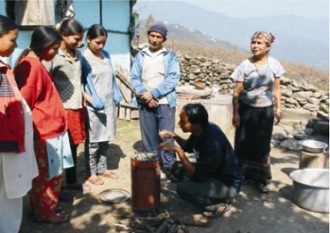June 9, 2009
About 24 years ago, I was in a house in a small village some distance from Udaipur town in Rajasthan. A government functionary was explaining how an improved chulha (cookstove) worked- they had installed it in the kitchen. At that time, India was waking up to forests being devastated. It was believed then (wrongly, as it turned out) the key reason was poor people cutting trees to cook food. It was also being understood smoke from chulhas was carcinogenic and that women were worst hit by this pollution. The answer was to design improved chulhas- for better combustion and with a chimney.
The woman owner of this improved stove was cooking the day’s meal. I asked if she was happy with what science and government had donated to her. Her answer was simple: “Looks good, does not work. I modified it.” Her problem was that, in this area, women cooked gruel on big utensils. Her home-made original stove was fitted to her diet and her utensils. The improved chulha, with its small opening to streamline the fire, was of little use. When the chulha was designed, nobody asked her what she needed. Nobody explained to her the laws of thermodynamics, so that she could fathom why the stove looked and worked as it did. And nobody was there who could repair or reshape her cookstove. She had simply broken the opening to fit her needs. Carefully calculated combustion in the laboratory of the local university and delivered through a government programme had turned to hot air.
I learnt my most valuable lesson that day. Designing technologies for diversity and affordability is much more complex than sending a man to the moon.
Consider the government’s own statistics. By 1994, some 15 million improved chulhas were introduced across the country. A survey by the National Council of Applied Economic Research found, in many cases, the stoves were not appropriately designed or had broken with use; over 62 per cent of the respondents said they did not know who to contact for repairs. No surprise here. Technology deployment in poor and unserviced households is a job the market does badly.
But why am I discussing this moment of development history? Well, cookstoves are back. This time, on the world stage. Science has discovered black carbon-soot-is a key contributor to climate change; these particles warm the air; when they settle on glaciers, the latter melt. So now, soot from chulhas poor households use-burning wood, twigs and cowdung- stands indicted for climate change. A bill has been introduced in the US Congress requiring the country’s environment protection agency to regulate black carbon and direct aid to black carbon reduction projects abroad, including introducing chulhas in some 20 million homes.



